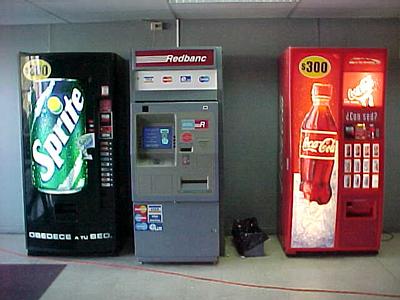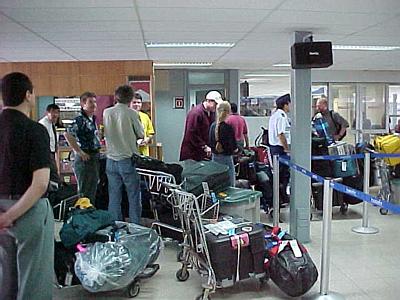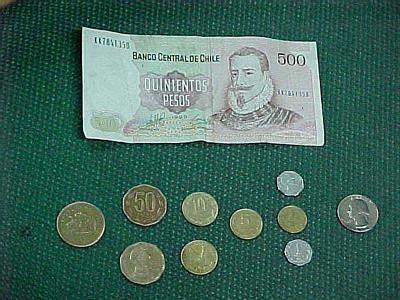25 February, 2000
Travel from Miami, Florida to Punta Arenas, Chile
Question 6: How many time zones have I traveled through on my way to Chile?
Last night at 11:30pm we left the Miami Airport where I met most of the rest
of my scientific team. Now there are 6 of us with huge piles of luggage. It
is an all-night flight (9 hrs) to Santiago, the capital of Chile. The seats
were a little wider than in domestic airlines, but it was still cramped. I
always enjoy watching the sun rising above the horizon of clouds--it was
beautiful. Soon we could see the tops of the Andes Mountains poking through
the clouds.
At Santiago we were met by Jimmy, an AGUNSA representative, and cleared
customs and immigration and transferred our huge supply of luggage with his
help. AGUNSA is the Chilean organization that takes care of ground
coordination for all United States Antarctic parcticipants in Chile including
transportation, places to stay, and moving us through the airports. They also
manage the cargo and supplies for the research vessels in Chile.
Our last stage of airline travel was a 4 1/2 hour flight with LanChile all
the way to the southern end of the country. Huge mountains were visible the
entire way, including the Torres del Paine in the national park we will visit
before we board the icebreaker for Antarctica. At Punta Arenas our luggage
was heaved into the backs of two small pickup trucks and into a couple of vans
with us. We were dropped off at our hotels with only the small pieces of
luggage we need for sightseeing; the rest are stored at the AGUNSA warehouse
at the port.
Punta Arenas is on the Straight of Magellan. Originally a profitable port
town helped by the maritime traffic created by the California Gold Rush, the
area lost some influence after the Panama Canal opened and fewer ships had to
round Cape Horn. In the late 19th century (1800's) the Patagonian region
became a center for wool and mutton production. There are still huge sheep
farms, estancias, today. The region's economy now also depends on trade,
fisheries and oil development.
The town is laid out on a grid system of one-way streets on a slope going
down to the ocean. Chileans drive on the right-hand side of the street as we
do in the US. Most of the buildings are two to three stories tall with lots
of bright colors on the walls and on the metal roofs. The town is a mosaic of
color! The local building style outside of town is almost always a single
story with white siding and a colorful corrugated metal roof.
Seafood is the usual local restaurant fare. There is salmon (mostly farmed),
white fish, eel, crab and a variety of bivalves (like clams) and gastropods
(like snails). There is also some beef and lamb, but seafood is the most
common. The language spoken is Spanish so I am working a bit to make myself
understood. The currency is Chilean Pesos; about 500 equals one US dollar.
Answer 5: There are no "Northern" lights there, since we will be in the
southern hemisphere. Instead of aurora borealis (boreal means northern) there
will be aurora australis, "Southern Lights". The phenomenon happens all the
time at both ends of the earth, we just can't always see them.

Punta Arenas

Santiago airport; Coca-Cola is available anywhere in the world!

Science group and luggage at Santiago airport, checking in for flight to Punta Arenas.

Chilean coins and 500 peso bill (=$1) compared to a US quarter.

Contact the TEA in the field at
.
If you cannot connect through your browser, copy the
TEA's e-mail address in the "To:" line of
your favorite e-mail package.
|
